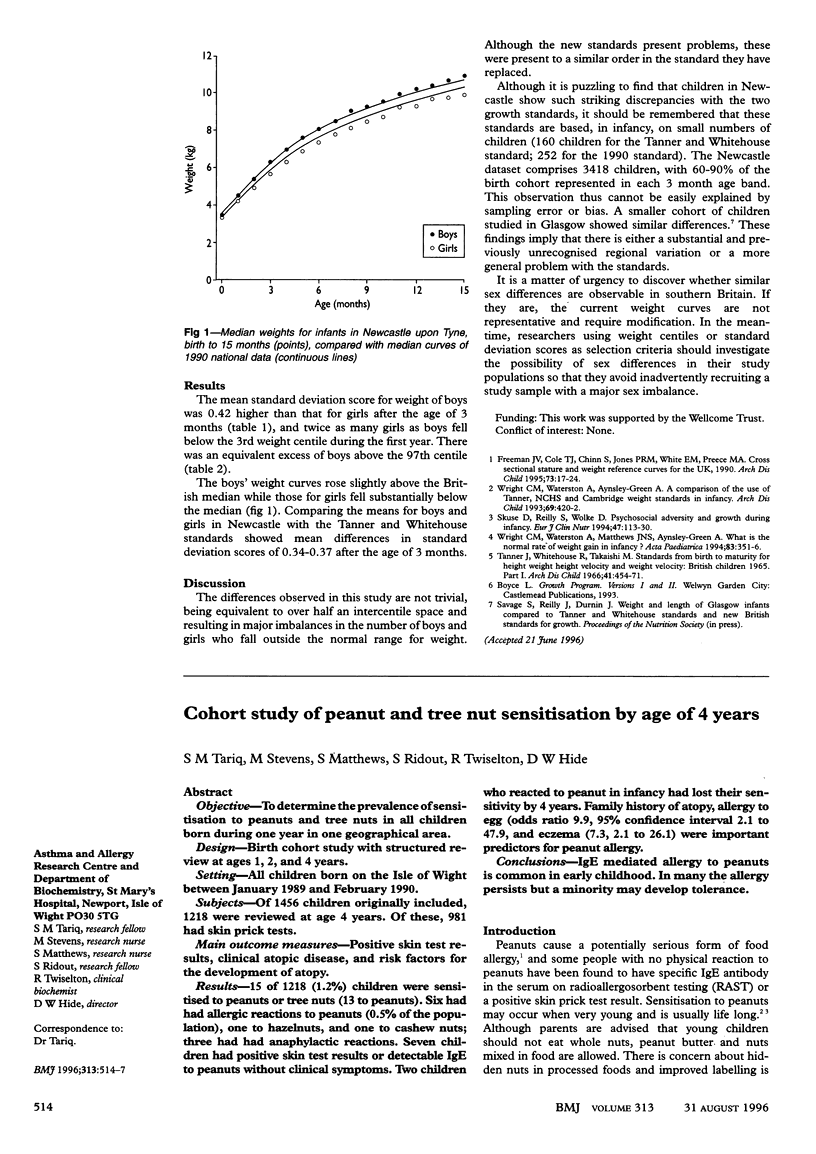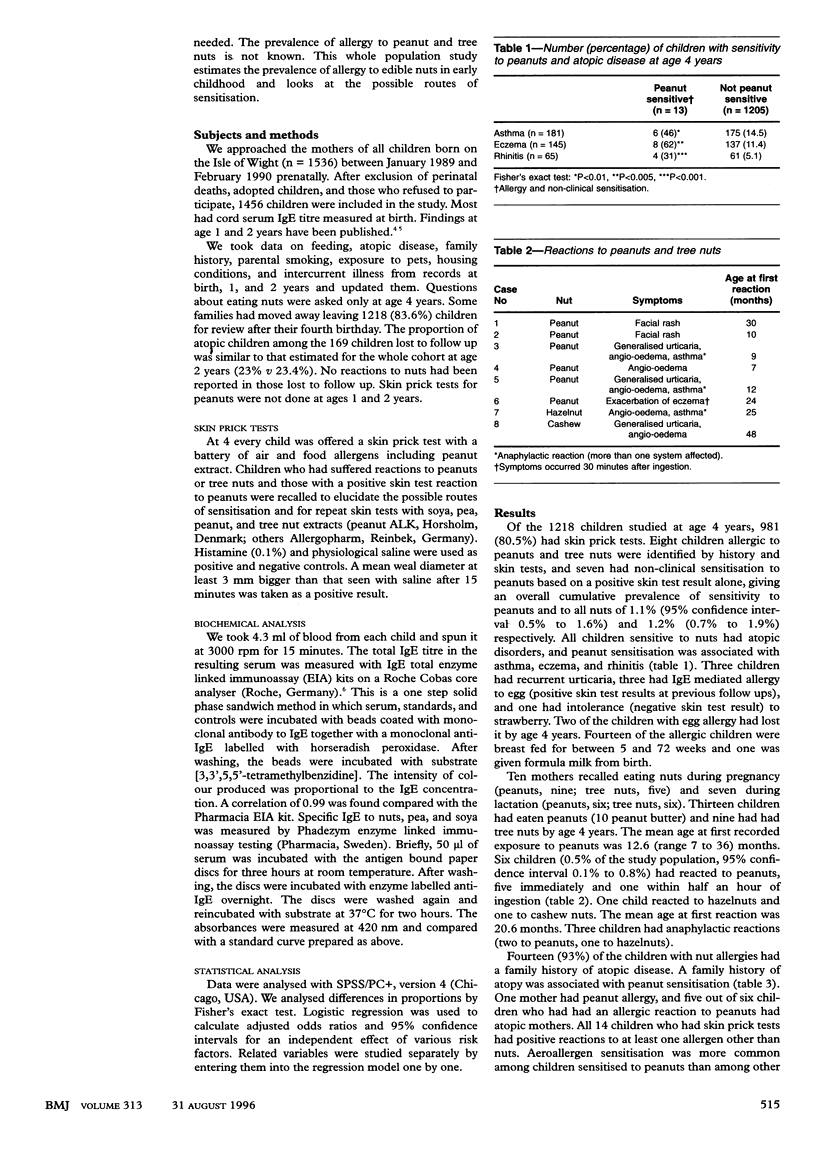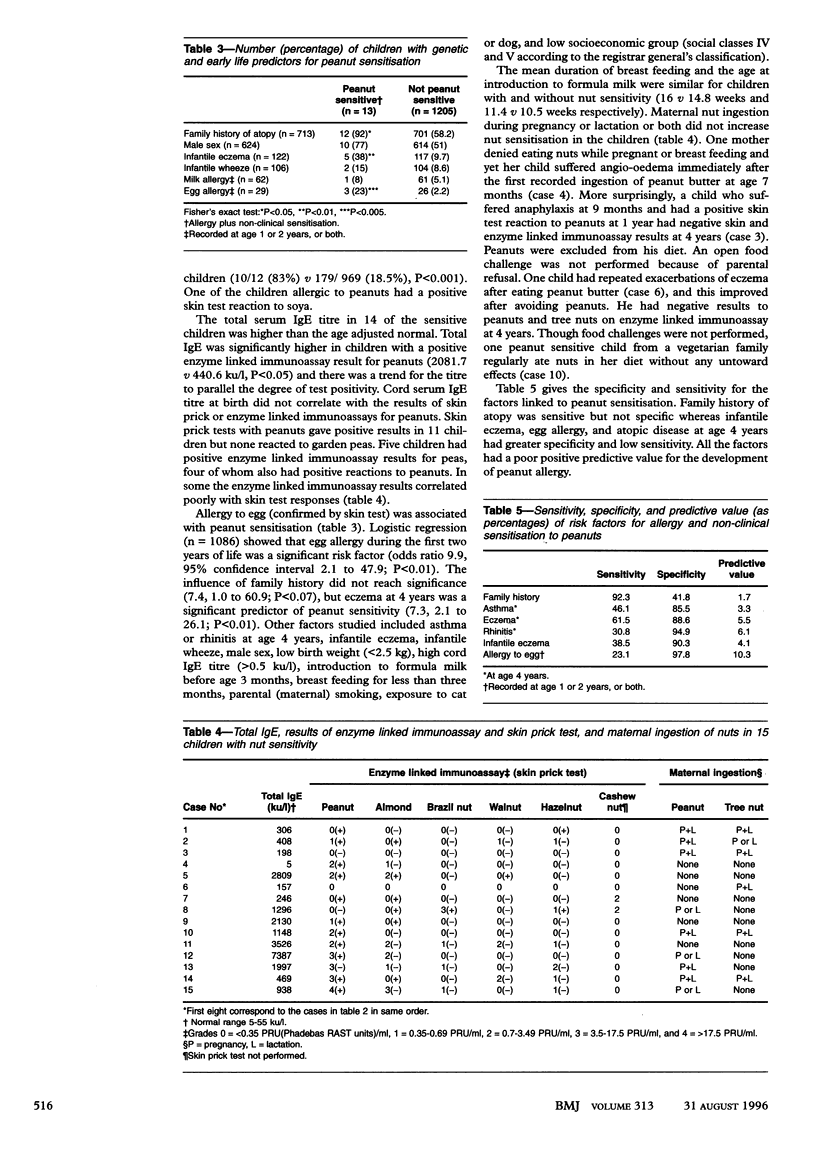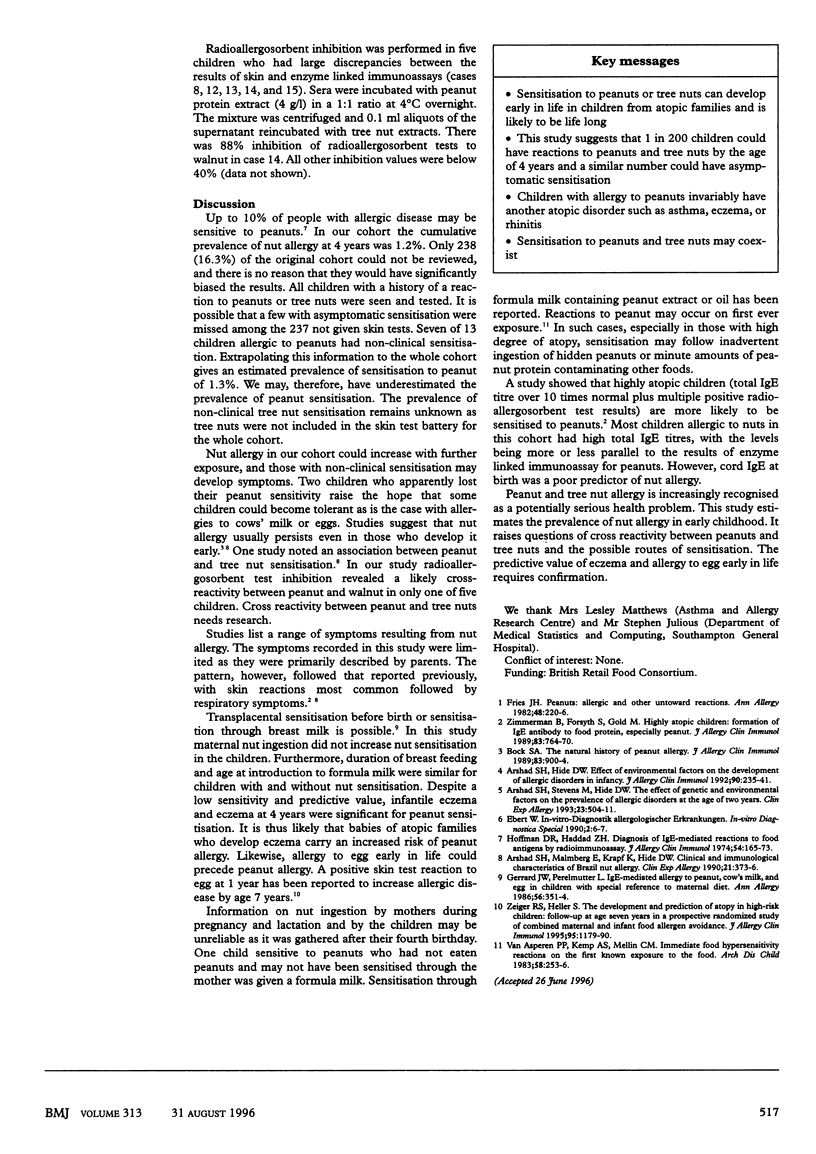Abstract
OBJECTIVE: To determine the prevalence of sensitisation to peanuts and tree nuts in all children born during one year in one geographical area. DESIGN: Birth cohort study with structured review at ages 1, 2, and 4 years. SETTING: All children born on the Isle of Wight between January 1989 and February 1990. SUBJECTS: Of 1456 children originally included, 1218 were reviewed at age 4 years. Of these, 1981 had skin prick tests. MAIN OUTCOME MEASURES: Positive skin test results, clinical atopic disease, and risk factors for the development of atopy. RESULTS: 15 of 1218 (1.2%) children were sensitised to peanuts or tree nuts (13 to peanuts). Six had had allergic reactions to peanuts (0.5% of the population), one to hazelnuts, and one to cashew nuts; three had had anaphylactic reactions. Seven children had positive skin test results or detectable IgE to peanuts without clinical symptoms. Two children who reacted to peanut in infancy had lost their sensitivity by 4 years. Family history of atopy, allergy to egg (odds ratio 9.9, 95% confidence interval 2.1 to 47.9, and eczema (7.3, 2.1 to 26.1) were important predictors for peanut allergy. CONCLUSIONS: IgE mediated allergy to peanuts is common in early childhood. In many the allergy persists but a minority may develop tolerance.
Full text
PDF



Selected References
These references are in PubMed. This may not be the complete list of references from this article.
- Arshad S. H., Hide D. W. Effect of environmental factors on the development of allergic disorders in infancy. J Allergy Clin Immunol. 1992 Aug;90(2):235–241. doi: 10.1016/0091-6749(92)90077-f. [DOI] [PubMed] [Google Scholar]
- Arshad S. H., Malmberg E., Krapf K., Hide D. W. Clinical and immunological characteristics of Brazil nut allergy. Clin Exp Allergy. 1991 May;21(3):373–376. doi: 10.1111/j.1365-2222.1991.tb01671.x. [DOI] [PubMed] [Google Scholar]
- Arshad S. H., Stevens M., Hide D. W. The effect of genetic and environmental factors on the prevalence of allergic disorders at the age of two years. Clin Exp Allergy. 1993 Jun;23(6):504–511. doi: 10.1111/j.1365-2222.1993.tb03238.x. [DOI] [PubMed] [Google Scholar]
- Bock S. A., Atkins F. M. The natural history of peanut allergy. J Allergy Clin Immunol. 1989 May;83(5):900–904. doi: 10.1016/0091-6749(89)90103-6. [DOI] [PubMed] [Google Scholar]
- Fries J. H. Peanuts: allergic and other untoward reactions. Ann Allergy. 1982 Apr;48(4):220–226. [PubMed] [Google Scholar]
- Gerrard J. W., Perelmutter L. IgE-mediated allergy to peanut, cow's milk, and egg in children with special reference to maternal diet. Ann Allergy. 1986 Apr;56(4):351–354. [PubMed] [Google Scholar]
- Hoffman D. R., Haddad Z. H. Diagnosis of IgE-mediated reactions to food antigens by radioimmunoassay. J Allergy Clin Immunol. 1974 Sep;54(3):165–173. doi: 10.1016/0091-6749(74)90053-0. [DOI] [PubMed] [Google Scholar]
- Zimmerman B., Forsyth S., Gold M. Highly atopic children: formation of IgE antibody to food protein, especially peanut. J Allergy Clin Immunol. 1989 Apr;83(4):764–770. doi: 10.1016/0091-6749(89)90012-2. [DOI] [PubMed] [Google Scholar]
- van Asperen P. P., Kemp A. S., Mellis C. M. Immediate food hypersensitivity reactions on the first known exposure to the food. Arch Dis Child. 1983 Apr;58(4):253–256. doi: 10.1136/adc.58.4.253. [DOI] [PMC free article] [PubMed] [Google Scholar]


